MENA Students Demand Representation at Santa Clara
What a Middle Eastern and North African checkbox could mean for MENA students
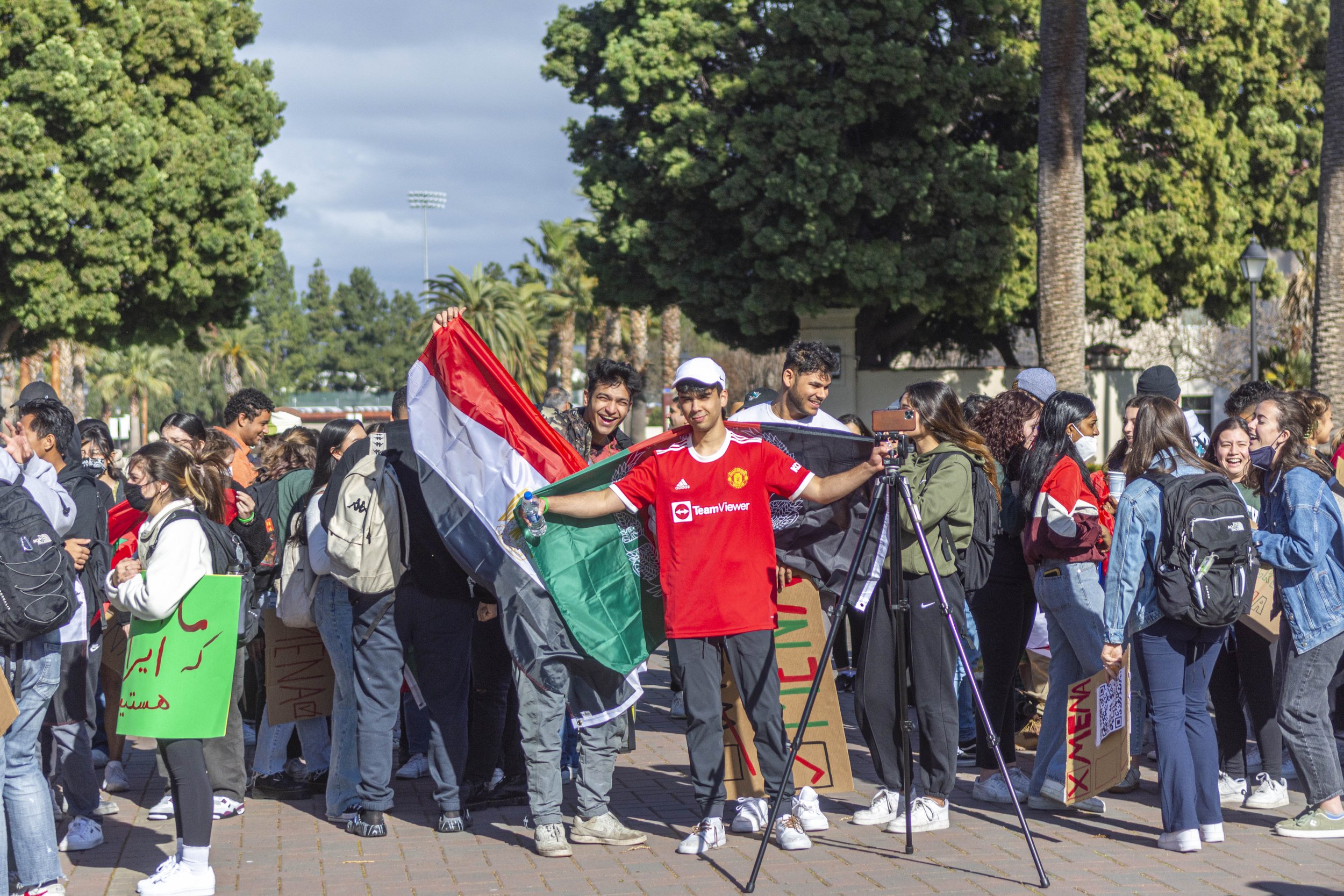
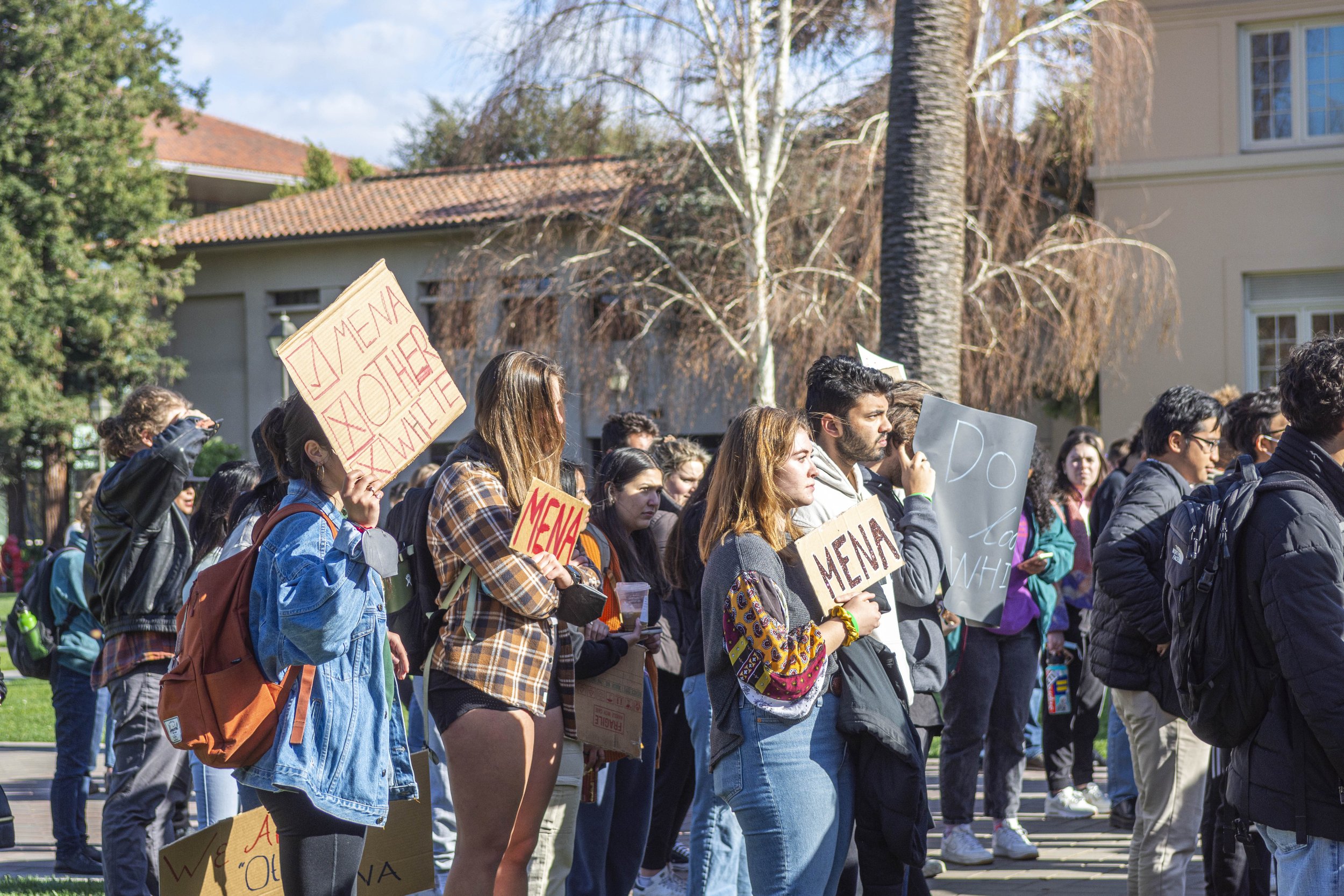
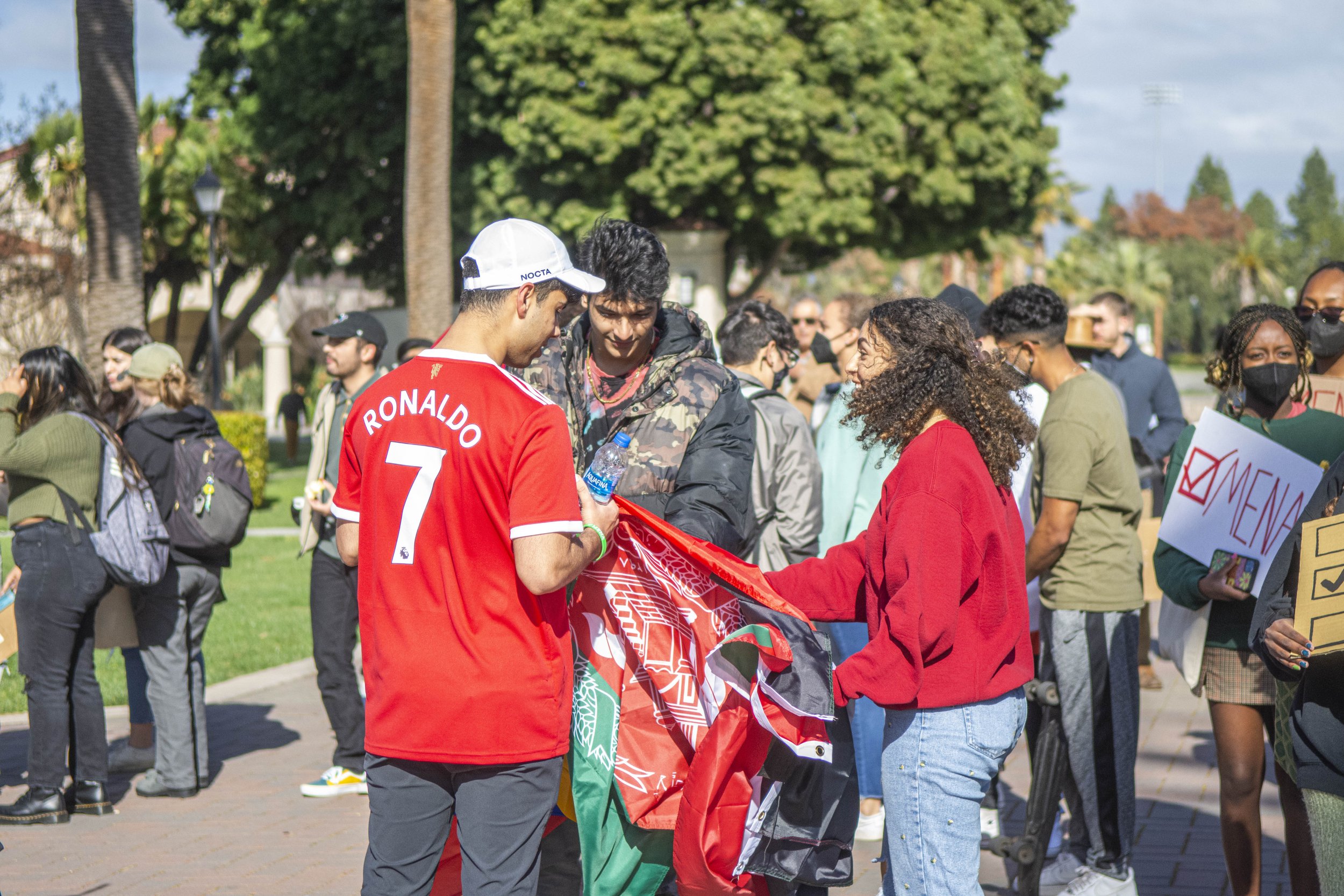
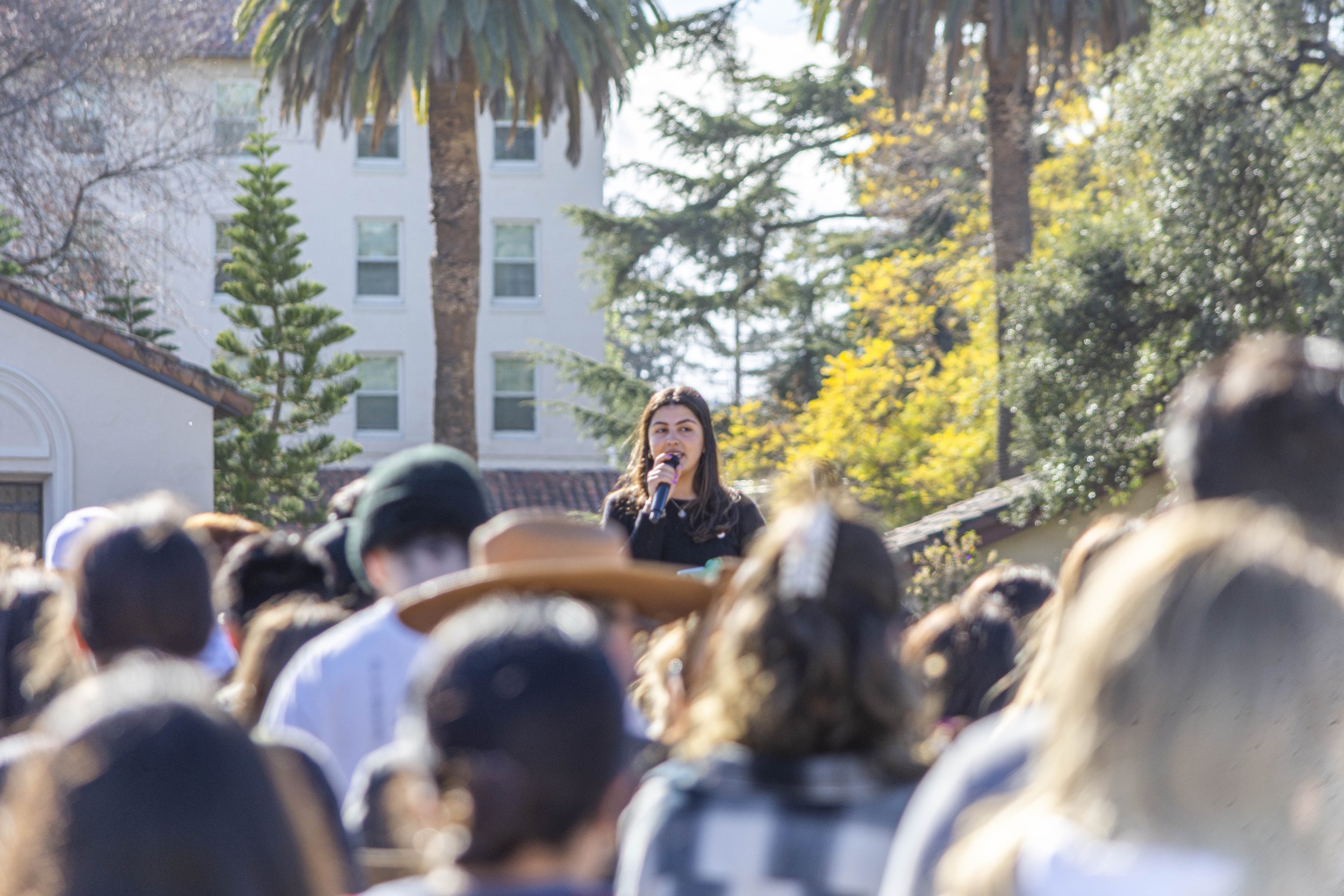
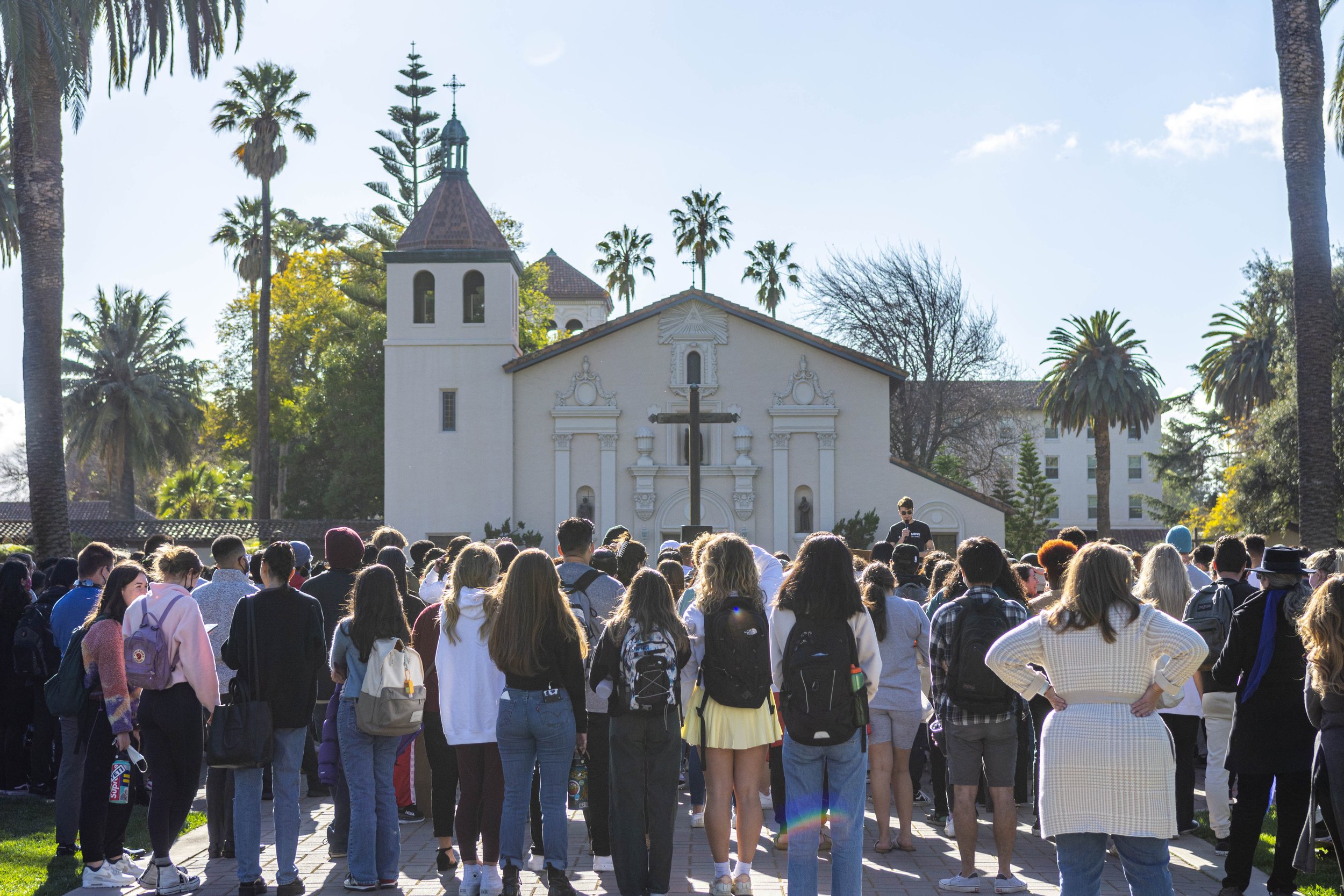
Photo Credit: Mako Watanabe for The Santa Clara
Students gathered in front of the DeSassiet museum on March 4 to demand a Middle Eastern and North African (MENA) checkbox on university demographic forms.
Multiple MENA students stood up to share personal stories about the MENA experience, their love for their culture, the struggles they face and the lack of data for their community. The demonstration gave students a visible platform to share their experiences and demands.
“There's been a history of institutional erasure of our identity,” junior Yaseen Elashmawi said in his speech. “We need to adopt these changes in our communities first, here at SCU. It is necessary that MENA individuals are able to self identify because MENA has unique experiences, unique struggles and we need a MENA checkbox as soon as possible.”
The demonstration was organized by senior Eemon Ghasemiyeh, junior Jennah El-Ashmawi and senior Vanessa Metti, who all identify as MENA.
A MENA checkbox would allow students of Middle Eastern and North African descent to identify themselves in various university demographic forms and surveys. Currently, students of MENA descent are forced to either check “white” or “other.” Advocates say this disregards their ethnic background as people of color and deprives them of significant data that pertains to their community.
The effort to increase MENA representation at the university level is part of a larger national issue. Despite many attempts over the last few decades to add a MENA checkbox, the United States Census still doesn’t have the option. The Census Bureau’s population division says “more research and testing is needed” before they can implement a MENA category for the 2030 census.
“Now, we have to wait another 10 years until…[the checkbox] can be presented again [in 2030],” said El-Ashmawi, MENA Club Social Media Director. “That's a long time of not seeing myself or being counted by institutions [and] what jobs I get. I'll always just have to check ‘Other.’”
A lack of representation in demographic data has implications on the national and university level. Critical information regarding mental health, food insecurity, academic support and more isn’t being accounted for and therefore cannot be addressed, according to Santa Clara professor of ethnic studies Allia Ida Griffin.
With a checkbox, Santa Clara will be able to identify the disparities and inequalities that lie in the MENA population, and from there can properly make decisions regarding the allocation of resources and support.
“The absence of data to better understand our students means that both the trauma is unseen and the specific needs are unsupported,'' said Griffin. “On a national level, the information gathered by the Census is important because it is directly connected to critical resources.”
This effort in obtaining a checkbox has been ongoing since 2016, starting with Nhada Ahmed '18, who met with faculty in the Office of Diversity and Inclusion (ODI), requesting a checkbox be added. The university didn’t fulfill that request.
In the years since Ahmed met with the ODI, various efforts have been made by MENA students, faculty and alumni in hopes of gaining representation at Santa Clara.
In 2017, “the first ethnic studies course on the MENA diaspora (ETHN 80) [was] taught by Dr. Allia Ida Griffin,” according to the SCU MENA Timeline. Two years later, the MENA club was officially recognized by Santa Clara — a process led by Sened Haddad '20.
In 2020, the MENA alumni community was formed, led by MENA student representatives Parwana Khazi ‘20 and Sened Haddad ‘20. Then, in 2021, the MENA student club hosted their first culture show.
A year later, Ciara Moezidis ‘21 started a petition for MENA students to self-identify on campus, which has accumulated almost 1,000 signatures.
“Creating the option for students to self-identify as MENA will increase the sense of belonging for MENA students, increasing their retention rates, bolster resources for culturally conscious mental health services, and diversify course offerings to focus on the MENA region and diaspora,” the petition reads.
After the success of the MENA self-identification petition, El-Ashmwai, Ghasemiyeh and Metti met with various administrators to push the agenda of self-identification for MENA students.
During their most recent meeting prior to the demonstration, Santa Clara administration expressed their support and have discussed adding a checkbox as they transition to Workday — an HR and financial software used currently for Santa Clara employees that will soon be implemented as a university-wide program, taking over e-Campus.
“With Workday coming in, it's a mechanism that's a pretty powerful tool for us to be able to gather a lot of additional information,” said Shá Duncan Smith, V.P. of Diversity, Equity & Inclusion at Santa Clara. “And, there's no better time for us to say, as the client, this is what we want in our system to be able to recognize this particular identity category because we want to know who is in our community”.
Despite this development, the process of adding the checkbox to Workday could potentially take months.
With the delay of the checkbox, the MENA club is in the works of launching a MENA Flourishing Fund (MFF), which would allow MENA students to apply for assistance with food insecurity, mental health resources and scholarships.
The MENA club hopes that after the demonstration, more people will support their efforts and interact more with the club, like at events such as their culture show on May 6.
For more information about MENA at Santa Clara, visit the MENA Instagram page @scumena.